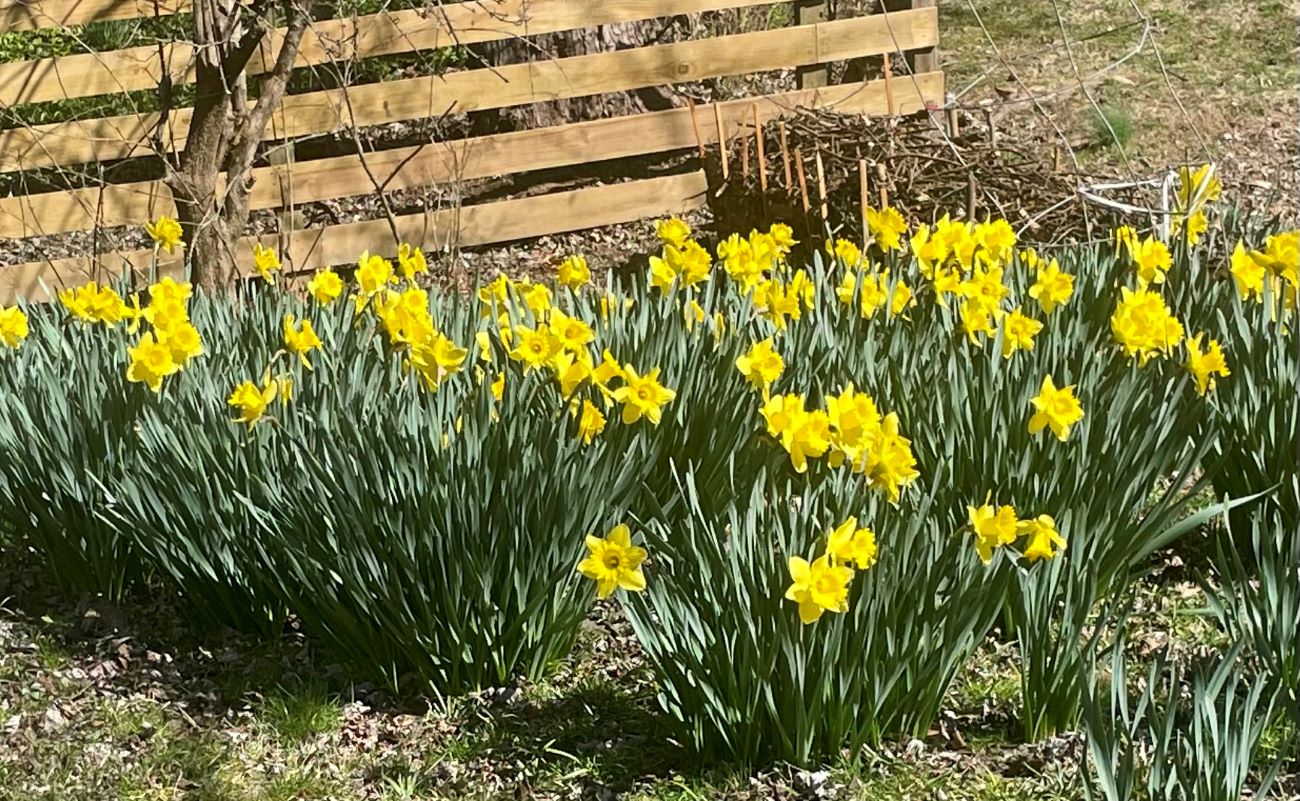
Has anyone else been blown away by the bulb display this late winter and spring? I have been struck by the lushness of this year’s flowers. Whether it’s more to do with last spring’s providing the right conditions for creating this year’s flowers, or this spring’s odd mixture of mild and chilly weather, it seems that we have been enjoying an unusually rich spring. Especially if you (and your garden) are of a certain age and invested in lots of spring bulbs many years ago, I trust they are now happily naturalized and making a brave show.
Wandering the garden and observing the unfolding of the snowdrops, crocuses, daffodils, and others as they take the stage, I notice things I had not observed before. For instance, the snowdrops in my yard that are under trees came out earlier than those in the open a few feet away. I would have thought the reverse would be more likely. Maybe the little bit of shelter was encouraging to earlier bloom?
It also seems like this year’s daffodils are lusher than I would have expected, including in areas where it had seemed they were petering out. Even what I call the “crap daffodils” are looking better than usual (these are double-flowering daffodils that were here in March 1982 when we moved in, and are highly susceptible to bud blast). I keep intending to dig them up and let the county compost them (since when I try composting them, they just sprout). The dozens of old overgrown daffodils edging the property line, which basically haven’t ever bloomed, this year sport a bloom or two right at the edges.

It is pleasing to see that insects are starting to visit these early bloomers; the other day I saw a small bumblebee visiting newly open clumps of Puschkinia. Bees do visit many of the imported bulb species, but daffodils are rarely visited by pollinators: pure eye candy, I’m afraid.
So as ecologically minded gardeners, should we be disturbed that so many of the earliest flowers (both the cultivated and the wild) are nonnative? What about the goal of creating habitat for native insects and birds in the garden?
It’s a balancing act. As with any nonnative, the gardener can decide whether a given bulb is sufficiently well-behaved and attractive to keep. In the case of Ipheion uniflorum (starflower), for instance, my husband declared war on it when he saw it taking over the front yard where he was encouraging the spread of spring beauties.
In my case, I should probably dig up my undesirable and nonblooming daffodils, just as I should finish removing nonnative pachysandra, because these really are taking up space where a native plant would provide more benefits. If I do so, I need to be able to fill the holes left behind, or weeds and invasives will move in to fill the gaps.
And lovely as our native spring flowers are, most of them appear much later than the earliest garden bulbs, not to mention the hellebores, which can start blooming as early as December. Must we feel twinges of guilt when enjoying the pleasures of early spring blooms, just because so many of them are not native to our region? Do we need to start digging up these old friends?
And so the realistic, wishy-washy answer, as usual, is “it depends.” Details matter: where your garden is in relation to natural areas, the relative percentage of natives and nonnatives, the particular plants and their spreading qualities, storm water management, etc. Being a purist in an urban or suburban area is probably impractical (or even impossible). A well-behaved nonnative in the right place can provide more ecological services than a native plant that is simply unable to thrive in a particular environment. On the other hand, if you avoid pesticides and minimize fertilizer use (especially artificial fertilizers), and you strive for biodiversity in plant types and forms and use sustainable practices, you can be an ecological gardener and still enjoy your spring bulbs.